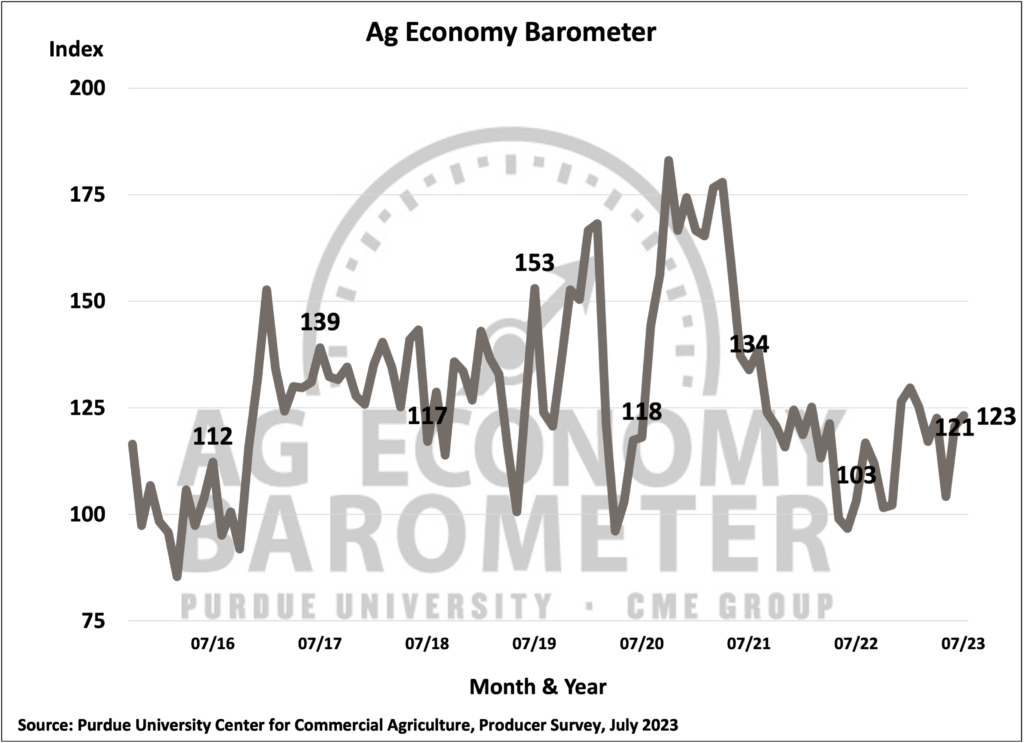Brownfield’s Weekly Commodity update featuring former OSU Extension Ag Economist Ben Brown.
This Week’s Topics:
- Market recap
- U.S. grain stocks adjustments
- U.S. harvest
- Corn and soybean storage
- Reports to watch
Market recap (Changes on week as of Monday’s close):
- December 2023 corn up $.07 at $4.88
- December 2024 corn up $.08 at $5.17
- November 2023 soybeans down $.20 at $12.77
- November 2024 soybeans up $.06 at $12.67
- December soybean oil flat at 57.43 cents/lb
- December soybean meal down $15.50 at $374.30/short ton
- December 2023 wheat down $.25 at $5.64
- July 2024 wheat down $.12 at $6.31
- November WTI Crude Oil down $2.38 at $87.24/barrel
Weekly Highlights
- For the most recent week of data- US crude oil stocks were down (-91 mil. gals) while US gasoline (+43.1 mil. gal.), Distillate (16.7 mil. gal.) and ethanol (16.7 mil. gal.) were all up.
- Ethanol production rebounded to 297 million gallons produced on the week using an estimated 99.9 million bushels of corn.
- US Ag Export sales were up for most commodities week over week including corn, soybeans, grain sorghum, and all wheats. US wheat sales were bullish coming in above pre-report estimates.
- It was the third consecutive week producers and merchants decreased their net short in Chicago futures and options positions by more than 40%- this week 49%. Producers and merchants also reduced the net long in soybeans for the fourth consecutive week.
- Managed money traders of Chicago commodities were mixed. They were net buyers of wheats and net sellers of corn and soybeans.
- Weekly ag export inspections were down week over week for corn and wheat, but up week over week for soybeans and grain sorghum. All were within pre-report trade expectations.
- US Grain stocks on September 1 were all within trade expectations but toward the top end for soybeans and below the average trade guess for corn. Both corn and soybean stocks were down from September 1, 2022.
- The quarterly Hogs and Pigs report showed that there were 74.3 million hogs and pigs in the US- up slightly from last September.
- Soybeans crushed for crude oil in August was 169 million bushels- down from 183 million in July, 175 million last August and pre-report expectations of 171.6 million bushels.
- Corn crushed in August totaled 490 million bushels- below July 2023 but up 1% from August 2022. Corn for fuel alcohol at 443 million bushels, was down 3% from July but up 3% from last August.
- US corn harvest is now 23% complete with corn crop conditions showing some slight improvement as combines roll along. Weekly increases were pretty consistent across the country.
- US soybean harvest is now 23% complete up 11% week over week. Conditions improved on the week after declining last week.
- 40% of the Winter wheat crop has been planted so far- slightly ahead last years pace but behind the average pace.



 Answering that question presents quite a challenge. Historically, farms that prioritize purchasing inputs early, on average lower total input costs. But this past year revealed better input prices were realized in the spring. As input prices continue to fall, largely driven by lower prices in commodity markets, last year’s strategy may still be a viable option. To decide which approach is right for your farm requires thinking strategically about your buying options.
Answering that question presents quite a challenge. Historically, farms that prioritize purchasing inputs early, on average lower total input costs. But this past year revealed better input prices were realized in the spring. As input prices continue to fall, largely driven by lower prices in commodity markets, last year’s strategy may still be a viable option. To decide which approach is right for your farm requires thinking strategically about your buying options.









 On Monday morning’s Coffee and Grain Zoom, Dr. Seungki Lee (Assistant Professor in the Department of Agricultural, Environmental and Development Economics) discussed the grain market outlook and the new crop prospects based on the USDA February World Agricultural Supply and Demand Estimates (WASDE) report. In all three major crops – corn, soybean, and wheat, strong prices are projected in the 2022/2023 market mainly due to the tight supply. Additionally, Brazil was singled out as its production can swing both the 2022/2023 and 2023/2024 commodity markets.
On Monday morning’s Coffee and Grain Zoom, Dr. Seungki Lee (Assistant Professor in the Department of Agricultural, Environmental and Development Economics) discussed the grain market outlook and the new crop prospects based on the USDA February World Agricultural Supply and Demand Estimates (WASDE) report. In all three major crops – corn, soybean, and wheat, strong prices are projected in the 2022/2023 market mainly due to the tight supply. Additionally, Brazil was singled out as its production can swing both the 2022/2023 and 2023/2024 commodity markets.